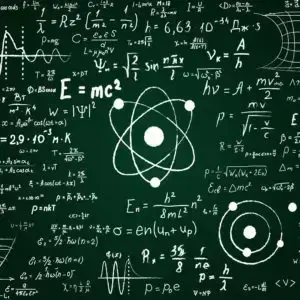Engineers at NASA say they have successfully revived thrusters aboard Voyager 1, the farthest spacecraft from our planet, in the nick of time before a planned communications blackout.
A side effect of upgrades to an Earth-based antenna that sends commands to Voyager 1 and its twin, Voyager 2, the communications pause could have occurred when the probe faced a critical issue — thruster failure — leaving the space agency without a way to save the historic mission. The new fix to the vehicle’s original roll thrusters, out of action since 2004, could help keep the veteran spacecraft operating until it’s able to contact home again next year.
Voyager 1, launched in September 1977, uses more than one set of thrusters to function properly. Primary thrusters carefully orient the spacecraft so it can keep its antenna pointed at Earth. This ensures that the probe can send back data it collects from its unique perspective 15.5 billion miles (25 billion kilometers) away in interstellar space, as well as receive commands sent by the Voyager team.



For anybody else curious;
Voyager 1 uses hydrazine (N₂H₄) as fuel for its small attitude control thrusters. Hydrazine is a hypergolic monopropellant, meaning it doesn’t require an external oxidizer—it decomposes exothermically upon contact with a catalyst, producing gas to generate thrust.
The thrusters are not used for propulsion, but rather to rotate and stabilize the spacecraft so that its antenna remains pointed toward Earth and its instruments can be properly oriented. Fuel consumption is extremely low—only a few grams per year—and Voyager 1 still has some hydrazine left, although it’s running low. Once the hydrazine is depleted, the spacecraft will no longer be able to control its orientation, which means communication with Earth will cease.
The Voyager spacecraft have no engines for linear acceleration; instead, they follow the trajectory and speed gained from gravity assists during planetary flybys in the solar system.
It’s in interstellar space now, right? Why does it need thrusters to reorient its antenna towards Earth instead of some combination of angular momentum matched to its velocity? Does it have to track Earth’s exact position based off the day of the year or something?
It needs thrusters, because there are still some small forces acting on the probe. For example, asymmetrical emission thermal radiation may rotate the probe slowly. This accelerated the Pioneer probes somewhat, see Pioneer anomaly. So without correction you can’t keep the orientation for years. Every tiny force would accumulate over this timescale.
thank you!
Out of interest I did some estimates and it seems that an asymmetry of three billionth of the total thermal radiation would be enough to rotate the probe once over a timescale of 10 years. So if the radioisotope generator has even just a tiny bit of a different infrared brightness on one side, it would turn voyager in a few years.
notes on calculation
Voyager weight: 815 kg
Approximate Diameter: 1 m
Assume mass and thermal radiation emitted with a center distance of this diameter. Then we can calculate as it would need to move 2π 2 m. It should be enough as coarse estimate and underestimate the acceleration. Distance to move: d = 6.3 m
Assume constant acceleration due to thermal radiation
RTG power at start: 3 * 2.4 kW = 7.2kW
RTG power now: 7.2kW * 10^(48/88) = 4.9 kW
Total of thermal radiation: 4.9kW / c = 16 uN
distance moved: d = a t^2 / 2
assuming 10 years accelerated movement movement:
a = 63 mm/yr^2
F = 52 fN
3 * 10^-9 of thermal force
I am not as educated on this as others but, my understanding is that earth is an unbelievably small target from that distance.
To piggy back off your thoughts, why don’t we send another probe to act as a relay between voyager and earth?
The thing is, now we have one 1-2 meter sized antenna on the voyager probes and a 100 meter sized antenna on earth with high transmission power. Signal decays with distance squared. To get the same signal power to the voyager probe assuming an relay in the middle, it would need an 25 meter antenna with the large transmitter/receiver currently on earth on space.
In short it’s easier to build a 4 times better transmission system on earth than in an relay in space.
One point where relays are used are mars rovers. There the orbiter has an large antenna and is close to the rover, so you don’t need to land the large antenna at the surface.
Voyager 3?
yeah!
That’s cool, but forget the thrusters, how is the battery pack on that thing still keeping it powered!?
The spacecraft uses radioisotope thermoelectric generators. It converts the heat generated by radioactive decay of plutonium into electricity. Engineers have been able to keep it working all this time by selectively powering down unused systems.
Radioisotope thermoelectric generators.
Half life of the plutonium isotope they used is about 88 years.
Just finished The Red Rising series and am still feeling spacey, this sounds great. What book is this?
I think The Martian.
Ah that makes sense. Thank you! Seen the movie, have not read the book. Gonna give that a go!
I read the book before the movie was announced, there is at least a good part missing from the movie.
That book left me longing for more of that same style. Then I picked up the Expanse.
I enjoyed the book.
That’s the quote from the movie itself, unless the book has the same scene word-for-word
just checked, and the book goes into more detail
Fucking love this book. Funniest thing I’ve ever read, consistently, from cover to cover
I think remembering in the book he takes a hot bath with it xD
If you haven’t read it already, try the new book “Project Hail Mary” also by Andy Weir. I found it even more enthralling.
Is it better than Artemis? I found it… Ok. Meh compared to The Martian.
Yes, Artemis is kinda meh. But Hail Mary is different. I found it better but at least you will find it different.
The answer to that is actually really interesting.